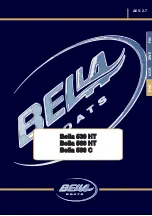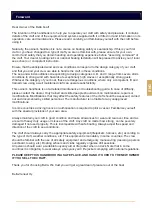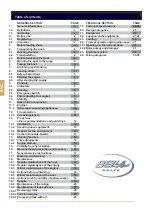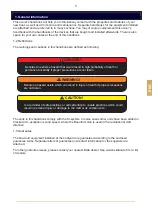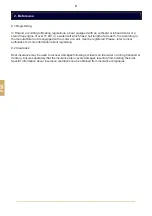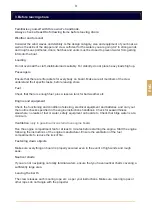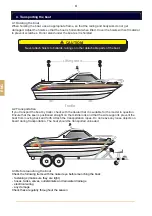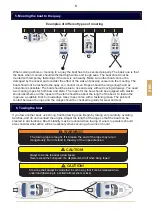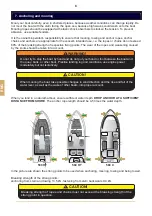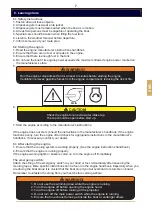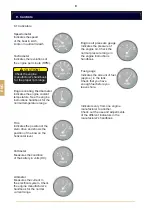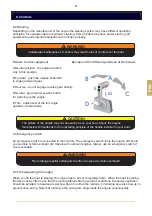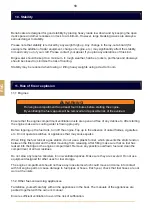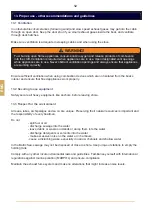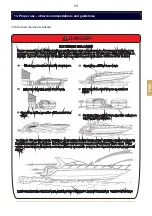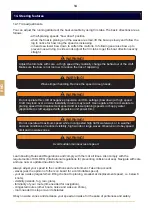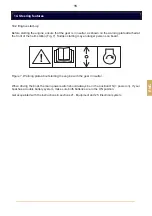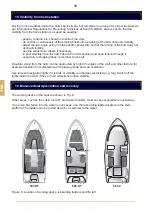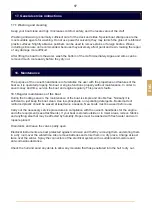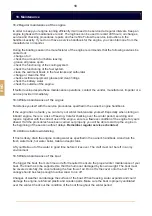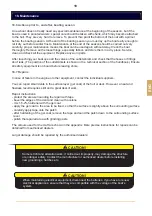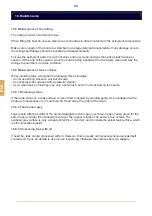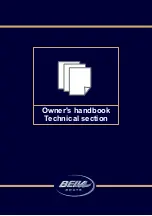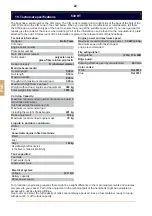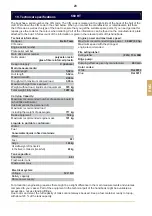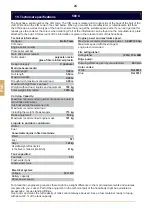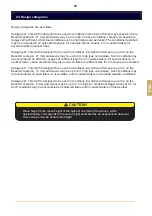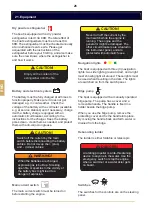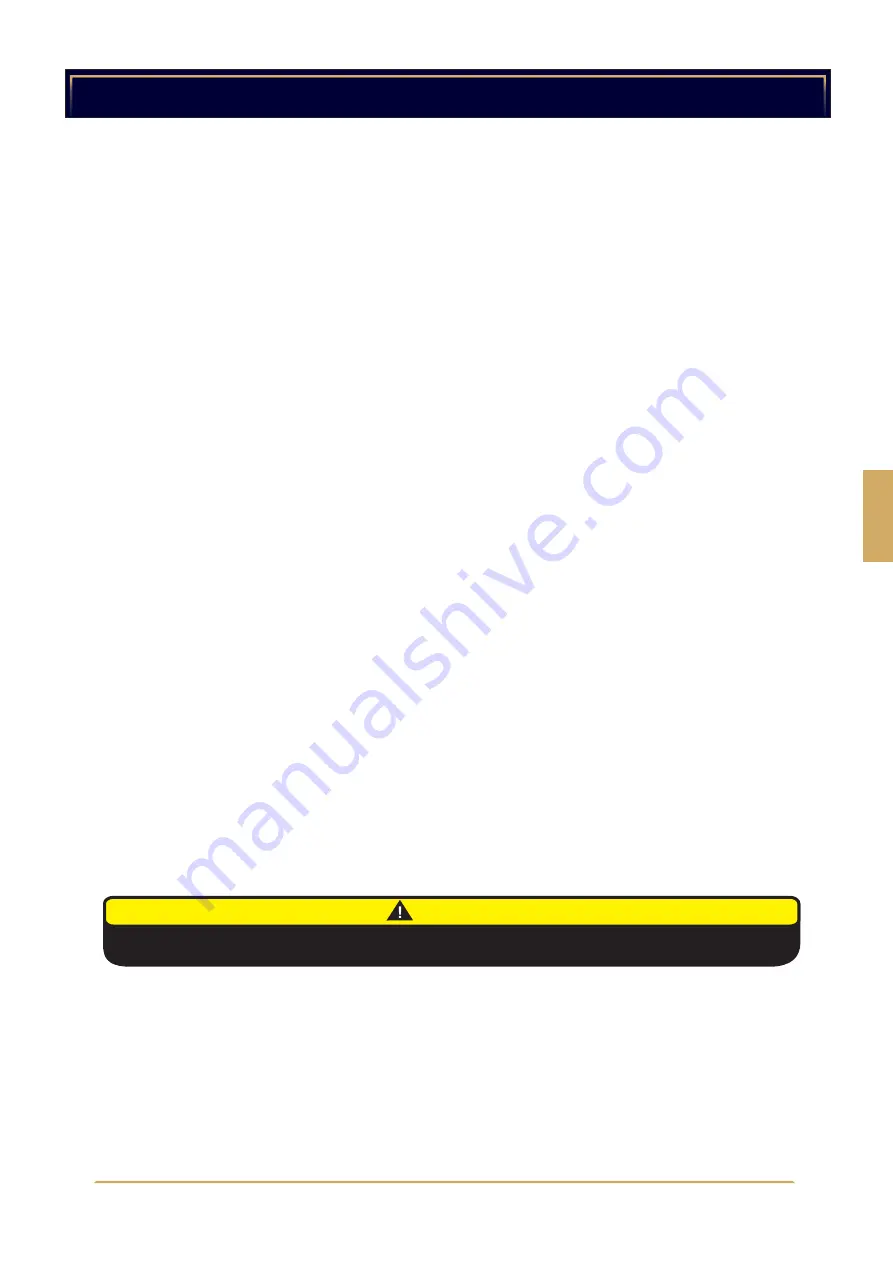
11
12. Fire protection
ENG
Ensure that any load in the boat does not interfere with access to fire-fighting equipment.
Inform all members of the crew about the location and operation of fire-fighting equipment, the location
of discharge openings into the engine space, and the location of emergency routes and exits.
Keep the bilges clean and regularly check for fuel and gas vapours or fuel leaks.
Do not fit free-hanging curtains or other fabrics in the vicinity of, or above, the stove. Do not stow
inflammable material in the engine compartment. If materials are stowed in the engine compartment,
they must be secured to prevent them from falling into machinery. They should not obstruct access into
or from the compartment.
Exits other than the main companionway doors or hatches with permanently fixed ladders are identified
by a symbol.
Never:
- obstruct passageways to exits and hatches,
- obstruct access to safety devices, e.g. fuel valves, electrical switches,
- leave the craft unattended when cooking and/or heating appliances are in use,
- modify any craft system (especially the electrical or fuel system) or allow unqualified personnel to
modify any craft system,
- fill any fuel tank or replace gas bottles when machinery is running, or when cooking or heating
appliances are in use,
- smoke while handling fuel,
- obstruct access to the portable fire extinguisher located in the locker.
Portable fire extinguishers should be serviced annually. After ten years the original extinguishers are out
of date, unless pressure tested. Replace portable fire extinguishers only with extinguishers of identical
fire-fighting capacity. Make sure that fixed systems are refilled or replaced when they expire or are used.
When replacing parts of the fire-fighting installation, use only matching components with equivalent
technical features and fire-fighting capability.
When in service, this boat shall be equipped with portable extinguishers, the effects and locations of
which are shown in sections 19. Technical specifications, 21. Equipment and 22. Location of the
equipment.
A warning plate attached near to the release device of the fixed extinguishing system:
Figure 4. A warning plate about shutting down engine and blowers before discharging the fixed
extinguishing system.
12.1 Fire extinguishers
CAUTION!
Before discharging shut down engines and blowers.
Summary of Contents for 530 HT
Page 1: ...Bella 530 HT Bella 560 HT Bella 580 C FIN SWE NOR ENG A6 V 2 7...
Page 2: ...Bella Veneet Oy We reserve the right to make changes without prior notice V 2 7...
Page 17: ...13 FIN 13 Oikea k ytt muut suositukset ja ohjeet VAARA 13 4 Hiilimonoksidivaara...
Page 25: ...Omistajan k sikirja Tekninen osio...
Page 38: ...26 S hk kaavio 560 HT 29 FIN...
Page 40: ......
Page 41: ...Bella 530 HT Bella 560 HT Bella 580 C FIN SWE NOR ENG A6 V 2 7...
Page 42: ...Bella Veneet Oy We reserve the right to make changes without prior notice V 2 7...
Page 57: ...13 SWE 13 4 Kolmonoxidrisk FARA 13 Korrekt anv ndning andra rekommendationer och riktlinjer...
Page 65: ...garens handbook Teknisk avsnitt...
Page 80: ......
Page 81: ...Bella 530 HT Bella 560 HT Bella 580 C FIN SWE NOR ENG A6 V 2 7...
Page 82: ...Bella Veneet Oy We reserve the right to make changes without prior notice V 2 7...
Page 97: ...13 NOR 13 Riktig bruk andre anbefalinger og retningslinjer 13 4 Fare for karbonmonoksid FARE...
Page 105: ...Eierens brukerh ndbok Teknisk del...
Page 120: ......
Page 121: ...Bella 530 HT Bella 560 HT Bella 580 C FIN SWE NOR ENG A6 V 2 7...
Page 122: ...Bella Veneet Oy We reserve the right to make changes without prior notice V 2 7...
Page 137: ...13 Proper use other recommendations and guidelines 13 4 Carbon monoxide hazard DANGER 13 ENG...
Page 145: ...Owner s handbook Technical section...
Page 160: ......
Page 161: ......

